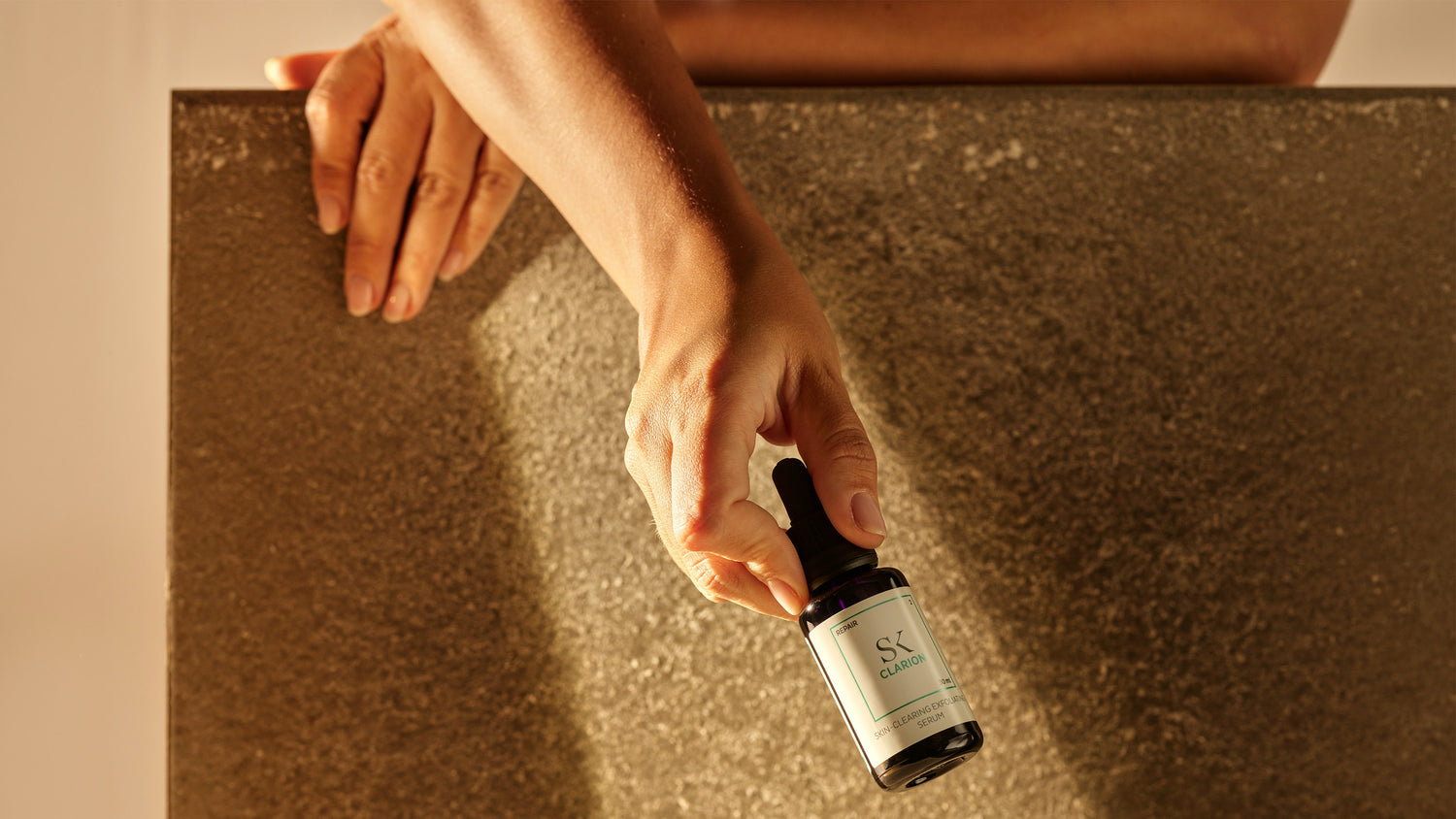Acids or keratolytics are used in cosmetics to regulate the activity of skin cells (keratinocytes) primarily for the purpose of achieving better skin texture or for cleaner pores in skin prone to irregularities. The best known and most popular today, salicylic acid is the only beta hydroxyl acid (BHA). It is isolated from white willow bark and serves primarily as a chemical exfoliant. In the territory of the European Union, it is allowed in a concentration of up to 2% in a cosmetic product for facial care, and is most effective in a relatively acidic pH medium, ideally up to pH 4. In concentrations of less than 0.5%, it can be used as a preservative, but in that case salicylic acid does not have a keratolytic effect on the skin, but a preserving one.
Who is salicylic acid for?
As an ingredient, salicylic acid is indicated for oily to mixed skin prone to mild to moderate acne and comedones . It reduces the secretion of sebum, i.e. it has a sebostatic effect and helps the skin to be purified deep in the dermis. Of all the acids, only salicylic acid is fat-soluble, which means that it can effectively penetrate sebum deep into the pore , where it helps to break the bonds that hold lipids and residual dead skin cells together, effectively creating a comedone or "plug" that blocks the flow of oxygen and enables the proliferation of C. acnes bacteria, the cause of acne.

In addition to its effect on acne and comedones, and pores filled with residual sebum and epithelium, salicylic acid is a fantastic anti-aging ingredient that reduces the size of pores over time, accelerates the fading of hyperpigmentation, and has an anti-inflammatory effect. Although long-term use thins the surface layer of armed cells, salicylic acid does not make the skin more sensitive to the sun and even has a proven photoprotective role by reducing erythema caused by exposure to UV radiation.
This means that salicylic acid can be used as a night treatment throughout the year, but it is also recommended to protect the skin with an adequate protective factor (15-20 in winter and 30 or more in summer) so that the positive effects of salicylic acid are not canceled due to the harmful photo effect . Salicylic acid is not recommended during pregnancy and breastfeeding, for use on children's skin, or on the skin of people allergic to acetylsalicylic acid derivatives (aspirin). It has been proven to help in the treatment of papulopustular changes in the skin with rosacea, but its use in such cases is recommended under the supervision and guidance of a dermatologist.
Skintegra product with salicylic acid
Our Clarion serum combines 2% salicylic acid and 4% glycolic acid to achieve a synergistic, satisfactory effect on all levels of the dermis for people suffering from mild to moderate acne, comedones and blemishes who simultaneously seek adequate anti-aging and antioxidant effects.
LITERATURE:
- Casciano DA, Allaben WT et al. Photocarcinogenesis study of glycolic acid and salicylic acid in SKH-1 mice. 2007. National toxicology program technical report series. September (524):1-242.
- Tosti A., Venturo N., Vincenzi C. 2004. Salicylic acid peeling in the treatment of rosacea. Journal of the American Academy of Dermatology

